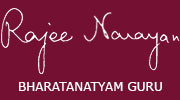REVIEWS
A recent workshop in Bombay concentrated on the art of conducting a classical dance recital and the importance of Nattuvangam in the dance context.
Even before the curtain rises for a dance programme, the mood is set by the mere sound of the cymbals striking together and provoking a resonance and a singular ambience.
And then the show starts.
Dance is a visual art - the pleasure of watching, the delight borne out of flowing nritta, or pure dance sequences, merging with vigorous movements and of course the use of expression as a language of communication. All through this melange, one synthesizing element is the reverberating sound of the cymbals - called talam in Bharatanatyam jargon - the skillful juxtaposition of two pieces of metal to produce the sound of dance.
The art of wielding this pair of cymbals so vital in dance, of effortlessly reeling out the syllables or the sollus, of guiding the dancer, of holding the reins, is the art of Nattuvangam.
A pivotal element in Bharatanatyam, as in Kuchipudi, Nattuvangam is an indispensable factor and rather the most exacting one. Interestingly, while dance in itself is an art that is taught, Nattuvangam has always remainded an art to be imbibed. The Nattuvangam workshop held recently in Bombay was an attempt to codify and formalise the teaching of Nattuvangam.
Rajee Narayan, Bharatanatyam guru of many years who conducted the workshop remarks, "In our days, we had to learn things the hard way: watching, absorbing, without asking questions. But in today's world the modes of teaching have expanded, they are more liberal. In this set-up I thought of teaching Nattuvangam to eager students."
The workshop went through the basics of tala shastra, the intricasies of rhythm, and took the students through the variations in speed and meter, the use of the stick called the tattu-kazhi and culminated with the use of the cymbals. It was an endeavour to systematize and organise the details that line the art of Nattuvangam, things that a person without sound grounding in Carnatic music and rhythm would have little access to.
The mastery over rhythm apart, Nattuvangam even otherwise is a specialized art. Masters of the past have imparted a special hue to this art by virtue of their skills. Veteran Bharatanatyam guru T. K. Mahalingam Pillai elaborates, "The Nattuvanar is required to have a grip over rhythm. He should be able to guide the recital. Moreover, the recitation of the sollus should be crystal clear and at the same time musical. This itself is an art." Rajee Narayan adds, "Sometimes, students take a breath at the wrong moment, thereby elongating the rhythm structure, or swallow up a syllable. All this makes a large difference."
Nattuvangam also involves sensing the global aesthetic effort of the recital and moulding oneself to it. Guru Pillai illustrates th point with a few examples made ornate with experience. "During the vigorous phases like a theermanam, the Nattuvngam has to complement it in force. Otherwise, for lyrical pieces like padams, it has to be softer, more gentle. It shouldn't be monotonous and should blend with the piece presented."
Eschewing monotony and synchronizing with the other musical instruments on stage demands hundred per cent alertness from the Nattuvanar. A slight lapse could make every thing go awry. Such is the role of the pair of seemingly simple cymbals.
Rajee Narayan makes another point of interest with respect to Nattuvangam. One has always spoken of the 'Nattuvanar', as the male doing the Nattuvangam. But there has in recent times been a change in role, with a lot of women wielding the cymbals. The change also signals knowledge breaking out of its bounds. And it is in this connection that the wokshop was significant; to attract the uninitiated, to sharpen the skills of the trained, and to open up vistas of curiosity and eagerness to the nuances of Nattuvangam.
K. Subadra Murthy 1998. Sruti



